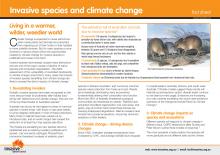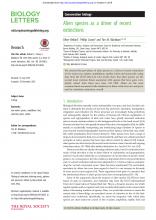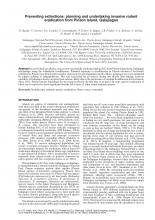Bridging the research-management gap: using knowledge exchange and stakeholder engagement to aid decision-making in invasive rat management


Island and Ocean Ecosystems, BRB
Available Online
Ewen, J.G.
,
Ferrière, C.
,
Jones, C.G.
,
Maggs, G.
,
Murrell, D.J.
,
Nicoll, M.A.C.
,
Norris, K.
,
Tatayah, V.
,
Zuël, N.
2019
The world is facing a biodiversity crisis. Nowhere is that more apparent than on oceanic islands where invasive species are a major threat for island biodiversity. Rats are one of the most detrimental of these and have been the target of numerous eradication programmes; a well-established conservation tool for island systems. For at-risk native species inhabiting large, populated islands, where rat eradication is not an option, control of rat populations has been conducted but this requires continuous management and therefore its long-term viability (and that of the at-risk native species which the project aims to protect) can be uncertain. Large-scale rat management areas or mainland islands have been successfully developed in New Zealand. However, large-scale management is a long-term investment with huge financial implications and committing to such an investment can be met with reluctance. This reluctance, and its subsequent hindrance to decision-making, can be caused by uncertainty relating to species conservation outcomes, and the multiple objectives of stakeholders. We address the issue of uncertainty and the importance of communication between all stakeholder parties in relation to the Mauritius olive white-eye (Zosterops chloronothos), a critically endangered passerine endemic to Mauritius and highly threatened by invasive rats. Specifically, we illustrate how the combination of scientific research and communication, knowledge exchange, and stakeholder workshops, can address some of the barriers of decision-making, helping to bridge the research-management gap, and enable the timely expansion of existing rat management for the benefit of this highly threatened bird.








